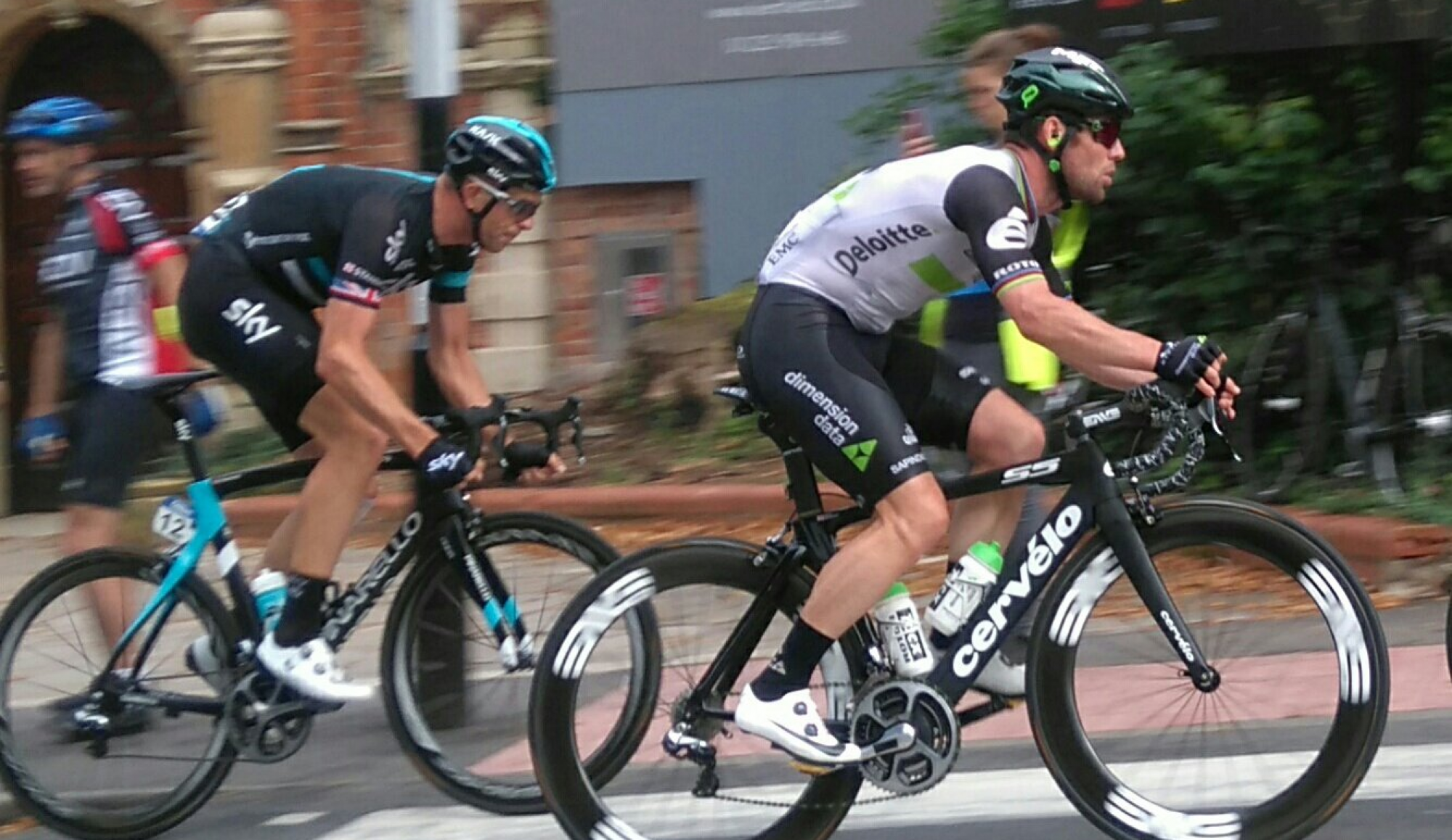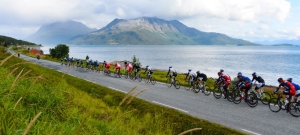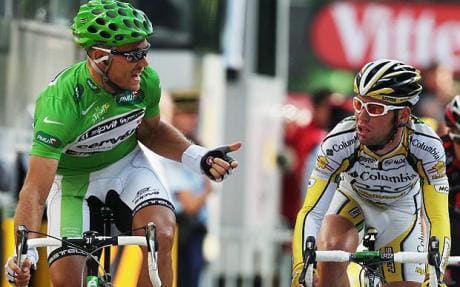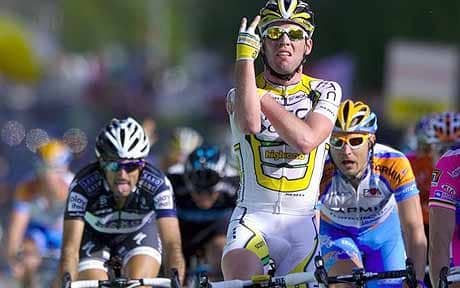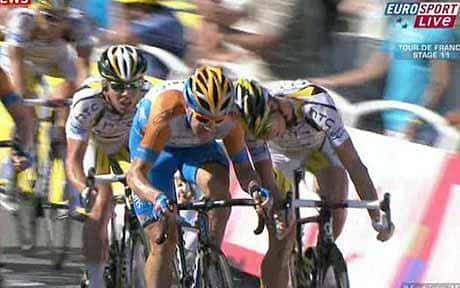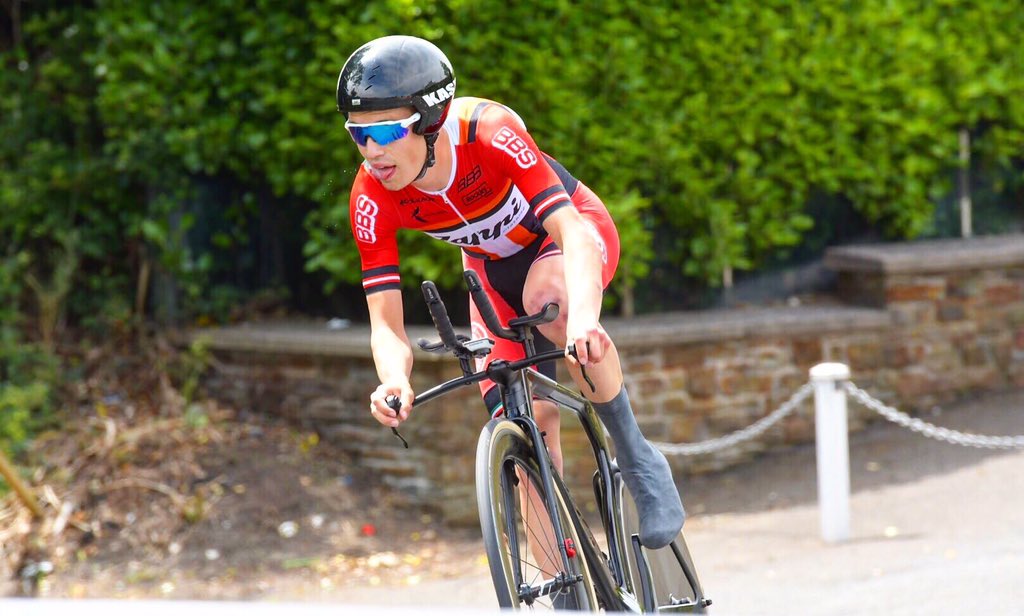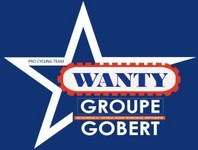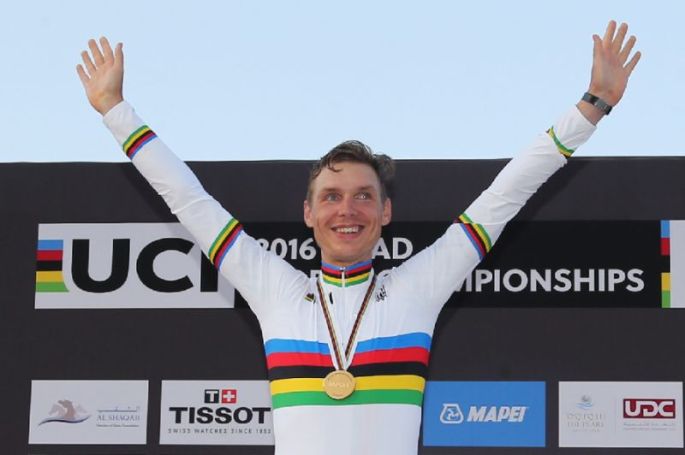As the season draws to a close, riders are bidding farewell to teammates and starting to look ahead to 2018, perhaps with a whole new team to adjust to as they complete a transfer. Others are happy and settled with an established routine, enjoying the camaraderie and familiarity of their existing team.
The latter scenario is exactly what 22-year-old American Alexey Vermeulen was imagining he’d be feeling as 2017 wraps up – the Race of the Falling Leaves has been ridden, the sprinters have had a last fling at Paris-Tours…time to start preparation for 2018 with your teammates right? Not quite. Despite having a successful season by anyone’s standard, with a sparkling performance at the Critérium du Dauphiné one of the highlights, LottoNL-Jumbo have informed Vermeulen that he hasn’t been selected for 2018.
“It had been a good season in my mind, but somewhere along the line my team, LottoNL Jumbo, did not see it the same way” Vermeulen tells me. “I felt loyalty toward the team and believed that they had my development as a 22-year-old as a top priority… but alas, after decisions have been made official and real thoughts have been spoken I know that was not as true as I once believed…. I worked hard and respected the jersey and the job, but at the end of the day, I didn’t see that same respect in return. I understand that cycling is a business, and I want the team to succeed. I am as motivated as I have ever been to stay at the top level of the sport – I look forward to proving that they made the wrong decision!”

American Renaissance
Vermeulen grew up in Michigan, and inherited his cycling pedigree from his Dutch grandfather. 2017 represented his second season at World Tour level; fittingly given his background, both seasons were with the Dutch team LottoNL Jumbo. Vermeulen is one of a host of young riders from the US who are proving themselves with some noteworthy results – indeed, American pro cycling is currently having a bit of a renaissance moment. Names like Neilson Powless, Brandon McNulty, Taylor Eisenhart and Lawson Craddock are definitely ones to watch over the next few years, with a glittering array of race results already behind them – stages at the Tour de l’Avenir, Best Young Rider jerseys at races such as the Tour of California and Tour of Utah, podium positions at Junior Paris-Roubaix…. the future for USA Cycling, which once looked to be on shaky ground, now seems to be in very good hands indeed.
Compared with the exuberant Eisenhart or the creative artsy streak in Taylor Phinney, Vermeulen was once branded ‘The Quiet American’ by Cyclingnews.com. Much like Greg LeMond before him, Vermeulen is affable and polite, and only too pleased to have a chat and share his thoughts. The blog he works on during the race season is an engaging read, and Vermeulen is a good storyteller with a self-confessed ‘love for words’.
“I have always enjoyed writing”, Alexey says of his blog, alexeyvermeulen.blogspot.com “When I created my blog, I was heading over to Europe for the first time as a 16-year-old. I saw it as an easy way to keep my family and friends updated with my experiences and adventures. As time went on I have come to enjoy the flow of writing, especially as a cyclist where sometimes we have more time than we need on our hands. Sharing my funny stories about cultural differences or the racing scene leaves constant and never-ending possibilities to write about!”
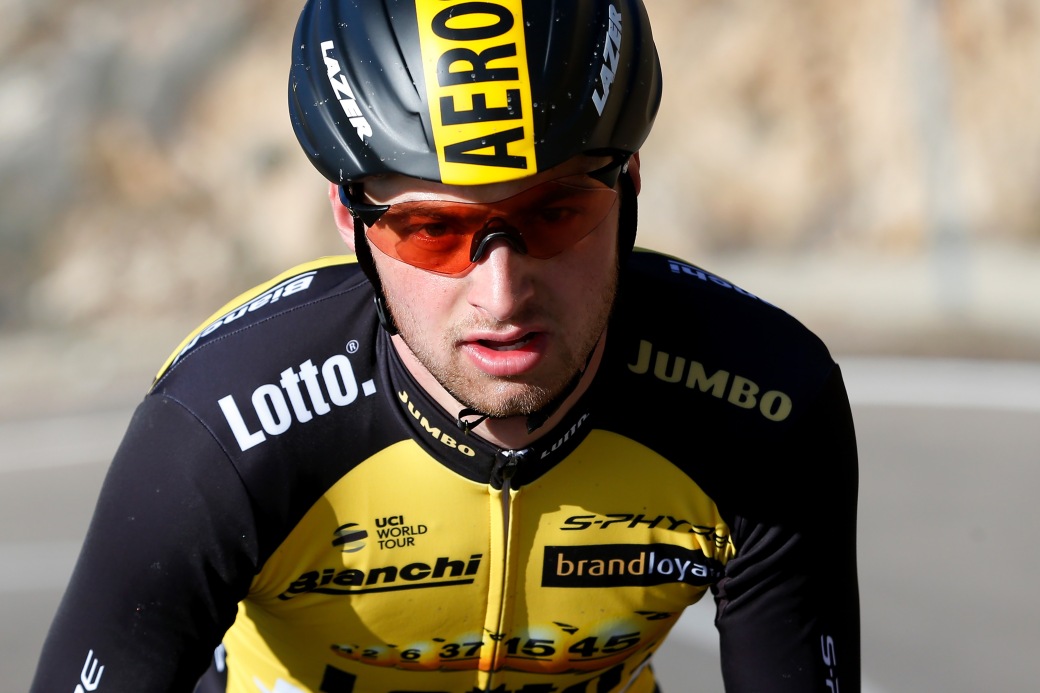
American Abroad
Cultural differences were not the only thing the 16-year-old from Michigan had to adjust to. “European racing is vastly different from the US. It is not harder, or more intense…but different.” Alexey says.
“The roads in Europe are smaller, narrower, so you race closer together, elbow to elbow – positioning is key, knowing where and when to put the effort in. Tactics play a bigger role. In the US, I view it as more of an all-out death race sometimes. At some point in the race, everyone rides as hard as possible and you see who is left. American racing creates really strong riders, some of the best time trial riders, but sometimes it can lead to clumsiness, as we do not learn from a young age how to navigate a cobble section or take on a harrowing alpine descent.
It always goes both ways though; if you put a European rider in a twilight crit, he will not be comfortable. European racing at the highest level is also like football or basketball in America. While you might have a national championship road race in Knoxville, Tennessee where 25 people are watching…races like Critérium du Dauphiné or the World Championships this year in Norway see crowds two and three rows deep lining the roads for kilometer after kilometer! In Belgium during the races there are even betting boards – one of the coolest experiences ever was seeing my name on the top of the board before a kermesse when I first started racing over the pond when I was u23”.
American Inspired
The cool experiences keep rolling in, with Vermeulen now riding alongside cyclists who inspired him when he was breaking into the sport. “Growing up I was inspired and motivated by Taylor Phinney. I found his drive and his quirky habits to be interesting and something that I could relate to. I always read about Taylor in Velonews or saw him in the press. He worked harder than most people I knew, and he was just perfectly older than me where I was always looking up to him and could use him as a carrot. Still to this day I see him as part of my cycling career.
Another rider I admire is Mark Cavendish. I watched him win in Copenhagen at my first World Championships where everyone said it was too hard for him. He has overcome more adversity in 10 years than most men do in a lifetime”.
As well as looking up to riders in the current peloton, Vermeulen is also fully versed in the fascinating backstory of cycling, its amazing feats of endurance and the compelling characters who achieved them, declaring Gino Bartali as a great inspiration. “Reading about Gino made me realize the grand history of the beautiful sport that I am competing in, and that it was not always as easy as just going out to train. Gino still holds the largest gap between two Giro d’Italia wins”.
Life isn’t all about cycling and cycling history though – it turns out that Alexey is a bit of a mean chef! “When I am not on the bike, I like to spend my time cooking as well as being outside. Spain has allowed for a good amount of exploring. Rest days spent going to the beach or finding hidden coffee shops and restaurants are rest days well spent. My favorite meal to cook would start with gazpacho, followed by steak, sweet potatoes, and broccolini with feta and paprika on the side, finishing with banana bread warm out of the oven or possibly rice pudding. I have been known to make people drool…”
There’s just time to quiz Vermeulen on his hopes for the future before stomachs start rumbling…..
“Short term I’d love to start and finish my first Grand Tour. Long term the goal is to go to the Olympics… LA 2028 would be a dream after missing out on the World Championships in Richmond with a broken wrist”.
For the immediate future, Vermeulen is hoping his World Tour dreams will continue after being forced to leave the team he loves and supports, LottoNL Jumbo. So what’s life like as a World Tour rider? “It can be relaxed at times, and offers a lot of free time, plus you get to see the world! but it also includes riding a bike for 30,000 kilometers a year. It can be harder than it looks!”
Well, racing up the Col du Tourmalet or the hairpins of Alpe d’Huez looks pretty darn hard to me. Best fuel up with some good food first….did someone say banana bread or rice pudding?
Photographs courtesy of Alexey Vermeulen
